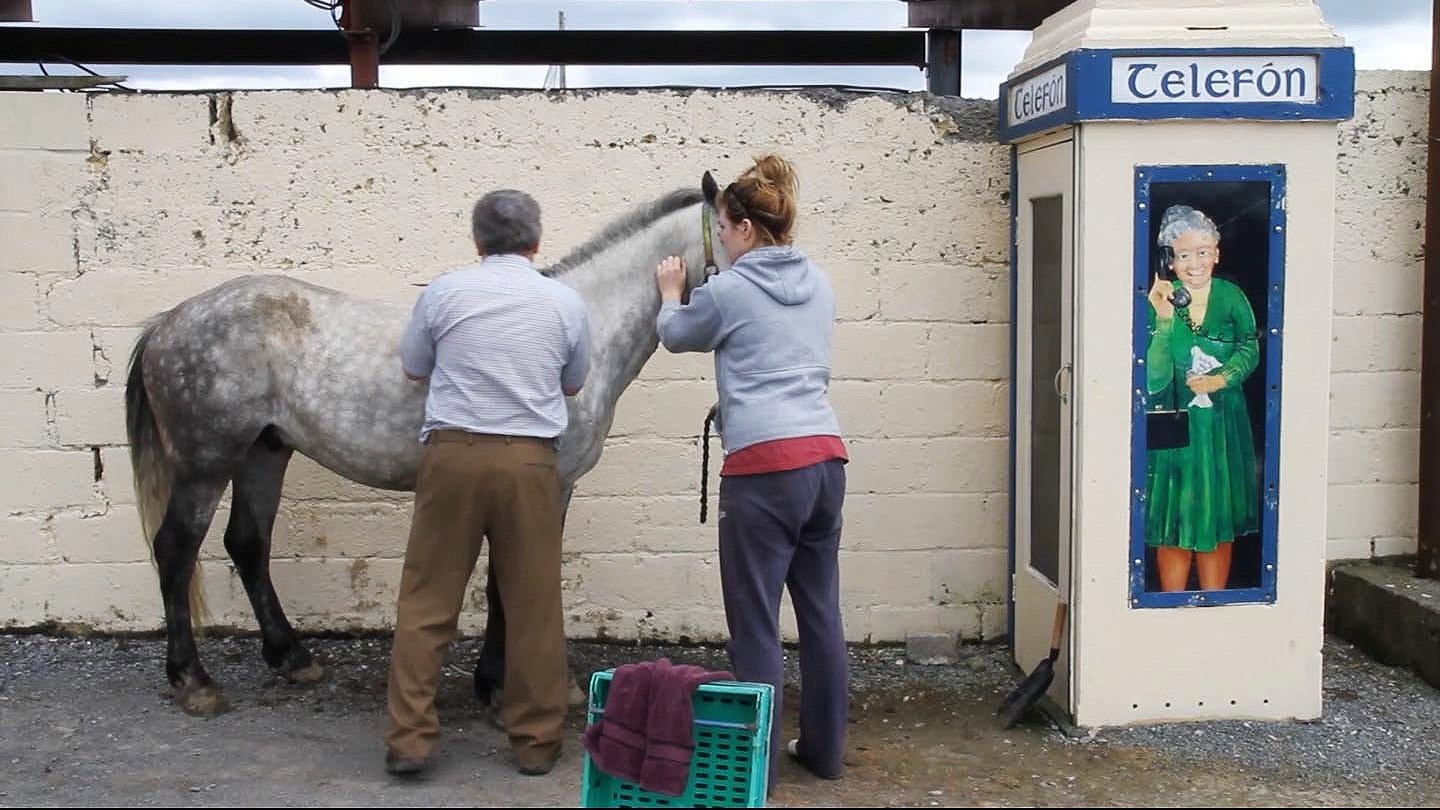Town of Strangers
Treasa O'Brien’s documentary spotlights the outsiders who now call the town of Gort in Galway their home.
Responses to this Irish documentary by Treasa O'Brien will doubtless vary according to the taste of the audience. Her film is set in County Galway in the town of Gort and part of her aim is to capture the character of the place as it is today. Her other concern takes up even more of the film’s time and that is because she concentrates primarily on interviewing a number of people living there and encouraging them to tell their stories. Nine such interviewees feature in addition to footage showing O'Brien herself setting up the film, talking about it on local radio and driving around. If her own story plays a minimal role here, those of the featured inhabitants give Town of Strangers its central emphasis. As the very title indicates, they have largely been chosen because they are outsiders, people whose situation prompts the question posed by the film: what is truly to be understood by the term ‘home’?
It appears that O'Brien originally had in mind a more experimental film, but she then became intent on giving screen time to those she had auditioned about appearing in it. Although all of them were then living in Gort, most of those selected had come from abroad. They included Brazilians and refugees from Syria and from Afghanistan, while an older Englishman could look back on how his nationality had made him unwelcome on his arrival there years earlier. Also included are Romany travellers who are Irish and seem at least for a time to have settled in the town, but their background again puts them in the category of outsiders.
Collecting these people together and getting them to talk about their situation and to describe their dreams leads to Town of Strangers reflecting the state of the world while also showing the diversity now to be found in an Irish town. The potential value of this is obvious, but how to present it? The approach taken by O'Brien is what I would describe as impressionistic. She eschews any commentary and opts to introduce most of her interviewees in the film’s opening section. It is close to being a montage as we move from one to another often without knowing their names and for a while unsure as to the country from which each has come. As the film goes on, we keep returning to each of them at intervals (but to some more frequently than to others) and additionally general atmospheric views of the town and its activities are inserted here and there. Briefly the film also incorporates a scene in which a re-enactment of a disturbing dream experienced by an Afghan is staged in order to help him but this seems rather out of place since it stands alone.
Bits and pieces of individual narrative do, of course, emerge, but I miss the lack of a more detailed context for each interviewee which would enable us to feel that we were getting to know them in the round. Studying each one in turn so as to allow each of them to elaborate on his or her situation in a more concentrated way might well have achieved that. However, what we get does make a mark in another way. Thanks to the high quality of the colour photography of Gina Ferrer García there are striking images which at intervals capture vividly the personality and situation of the subjects. In that respect Town of Strangers is well made, but it suggested to me something akin to a brilliant photographic exhibition in which the works on display capture specific insightful moments. That is why I describe Town of Strangers as impressionistic and, if such a mode applied to a feature film attracts you, you will be far more appreciative of this film than I was. Indeed, those who approve the manner adopted will find Town of Strangers well done with its visual quality adding to its appeal. But for myself I felt that I was continually getting glimpses of a work that I would have found far more meaningful had it been approached in a different way entirely.
MANSEL STIMPSON
Featuring Rosa Silva, Ana Maria De Oliveira, Ralf Perkins, Diana (Dido) Rogerson, Hamid Fakhri, Chloe Donovan, Jose Caravalho, Elham Teae, Rowan Francis, Treasa OBrien.
Dir Treasa O’Brien, Pro Martha O’Neill and Treasa O’Brien Screenplay Treasa O’Brien, Ph Mina Ferrer García, Ed Mirjam Strugalla, Music Irene Buckley.
Wildfire Films/Stinging Hornet Films-New Wave Films.
82 mins. Ireland. 2018. UK Rel: 10 February 2023. Cert. 12A.


